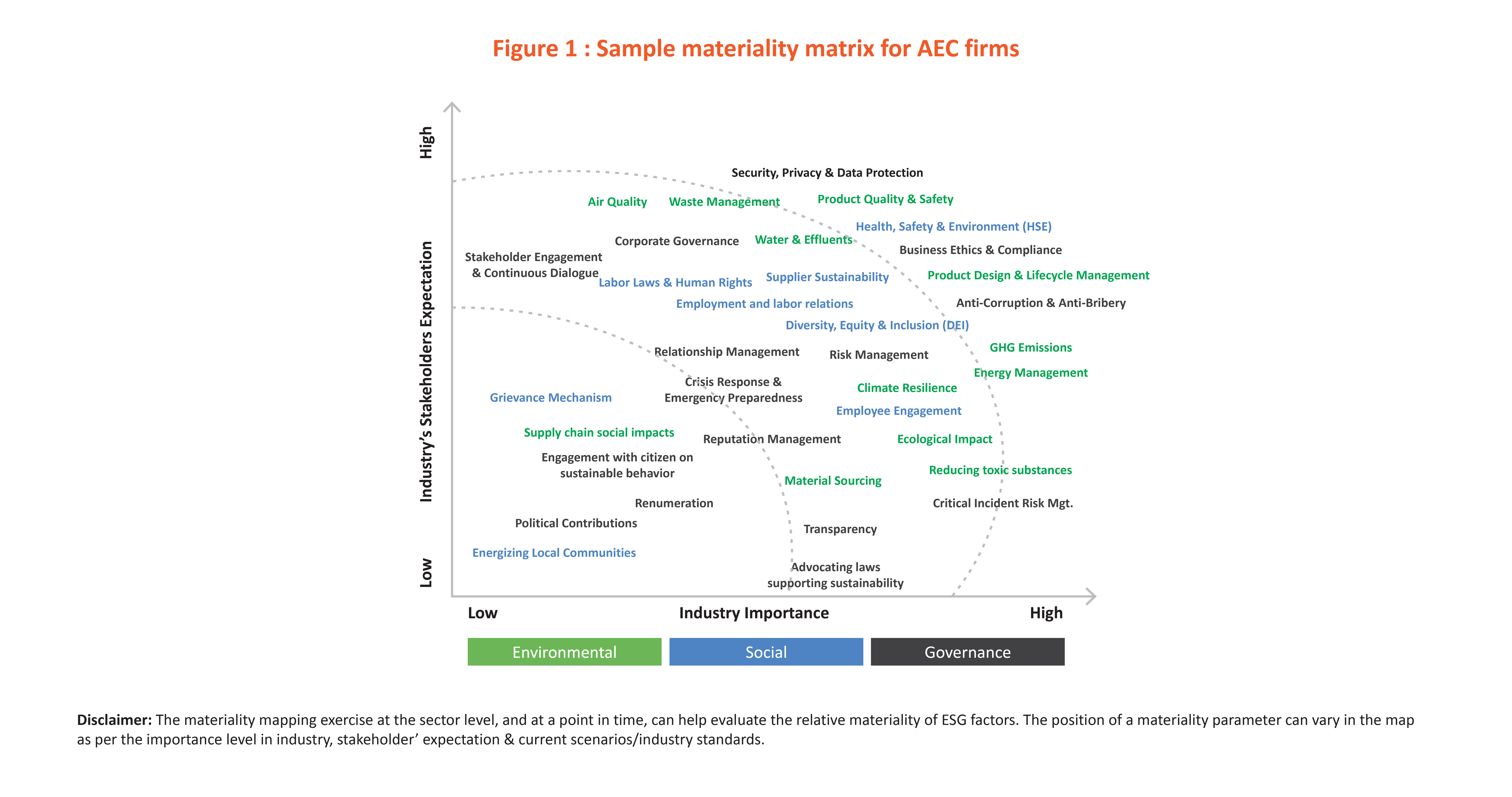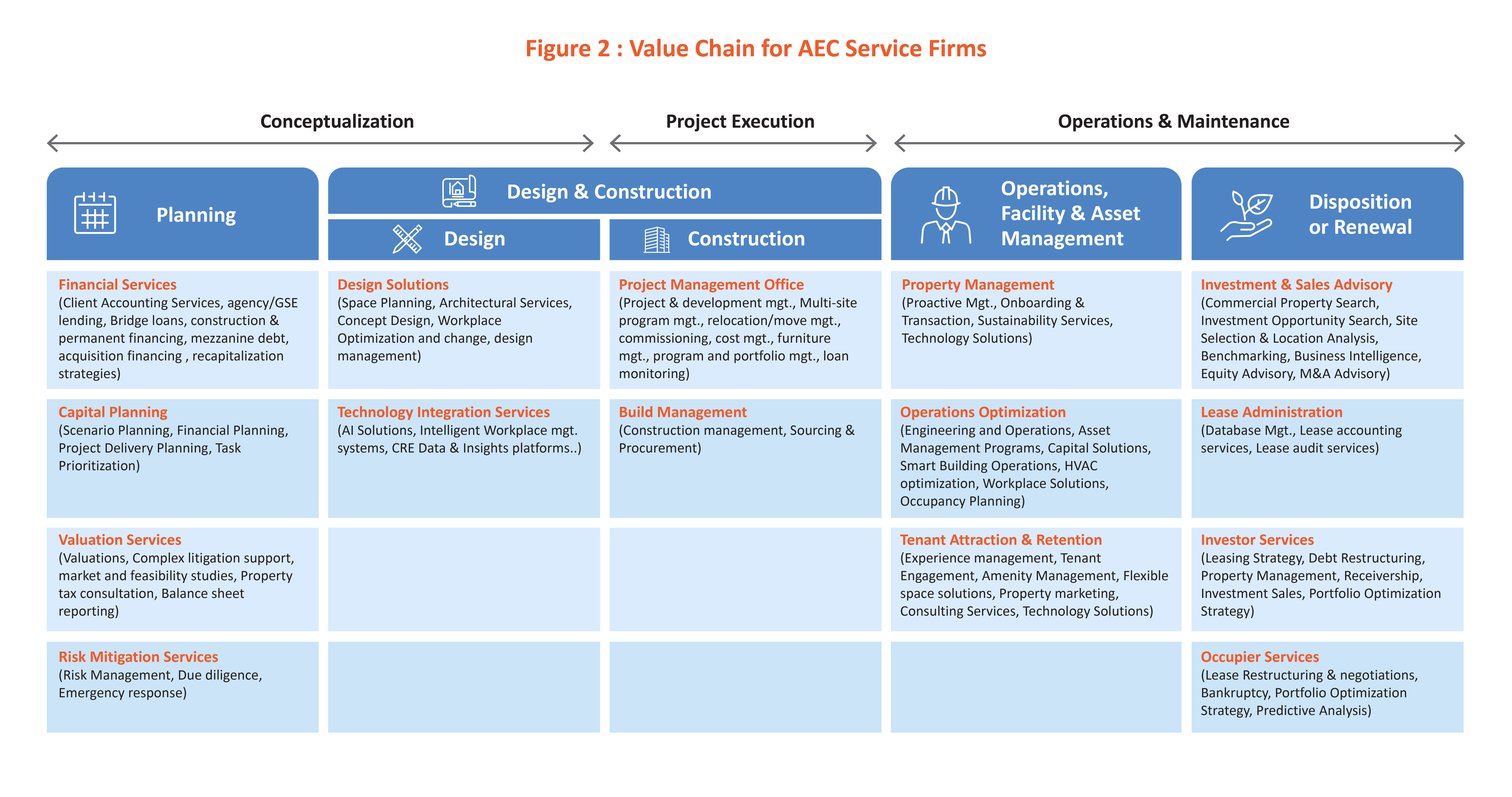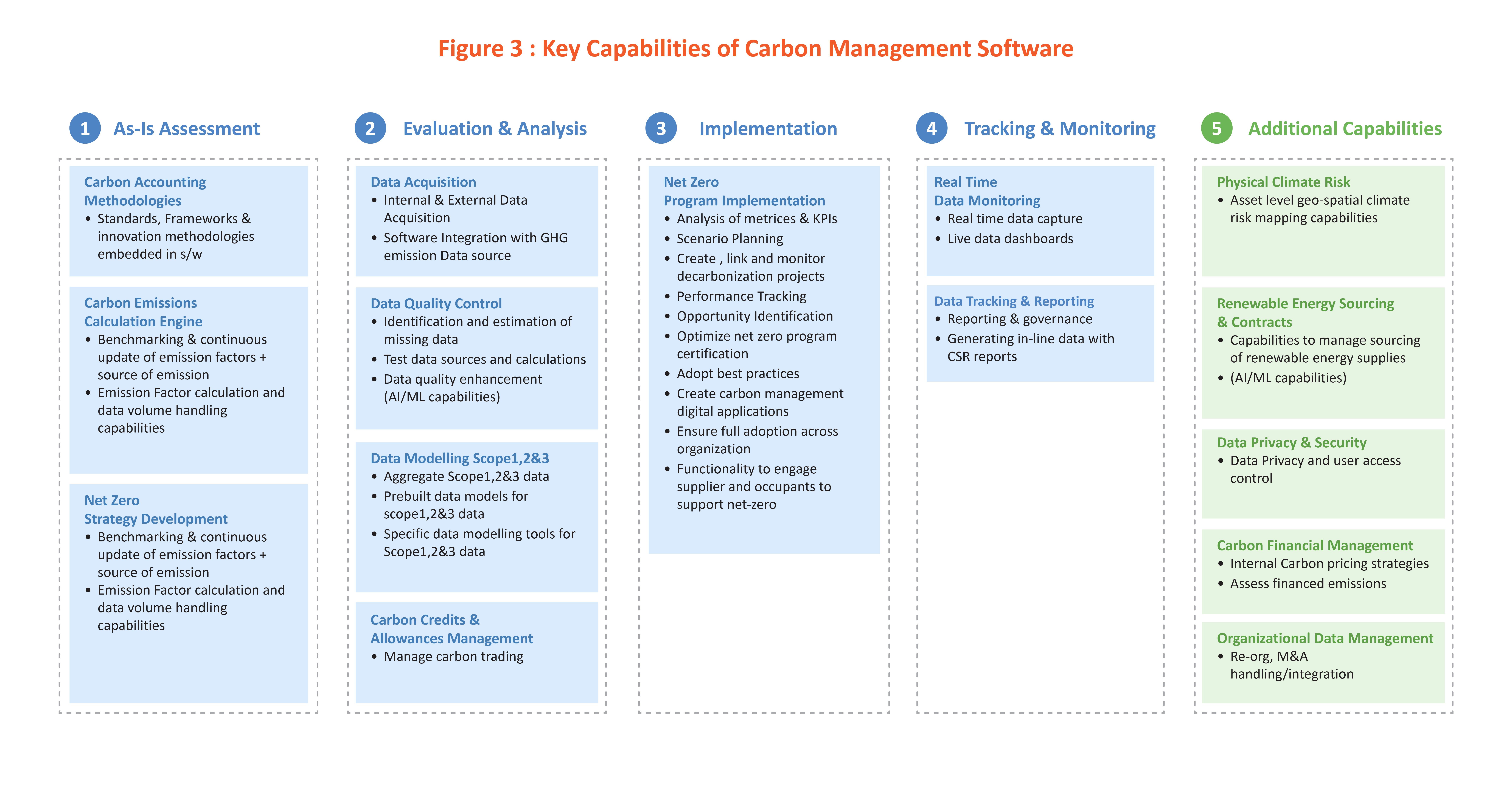INDUSTRY
Highlights
- The AEC sector is at a transformative point where sustainability has become an essential business priority.
- The integration of environmental, social, and governance (ESG) factors throughout the AEC value chain will offer a comprehensive future roadmap for firms in this sector.
- Reducing greenhouse gas emissions, water and wastewater management, carbon footprint reduction, and employee well-being are critical areas where AEC firms can make a tangible impact.
On this page
A green shift
AEC firms must consider how sustainability practices can be embedded at every stage of their value chain.
As the world shifts towards greener initiatives, AEC firms must recognize the pressing need to integrate environmental, social, and governance principles into their operations. Green materials, energy-smart designs, and waste-reduction methods empower AEC firms to achieve sustainable goals.
In this dynamic landscape, the urgency of sustainability in AEC firms is multifaceted. Approximately 39% of global carbon emissions originate from the built environment, and with rapid urbanization, the building construction sector is under increasing pressure to reduce its environmental footprint.
Legal mandates are becoming more rigorous, with numerous jurisdictions introducing tougher compliance standards. For instance, the adoption of the IFRS International Sustainability Standards Board in 75 countries signifies a shift towards standardized sustainability reporting. In the United States, the SEC's guidelines on US climate disclosure have become mandatory for large, accelerated filers, and smaller companies are set to follow suit.
Under the EU’s corporate sustainability reporting directive (CSRD) regulation, both EU businesses and qualifying non-EU subsidiaries must report on their environmental and social performance.
AEC firms risk legal battles, damage to reputation, limited access to capital, and missed business opportunities. Therefore, the implications of non-complying with these regulations are significant. Embracing sustainability isn't just about staying ahead of the curve for AEC firms. Sustainability adoption by AEC firms is vital for both market leadership and securing long-term business viability.
Key drivers
To drive sustainable outcomes, AEC firms must focus on key material indices that align with their business operations.
These indices (See figure 1) provide a framework for assessing and prioritizing sustainability initiatives and help tracking their progress.
The shift to renewable energy sources and greenhouse gas (GHG) emission management are key focus areas to reduce environmental impact. Today, a major chunk of these emissions come from building operations and related systems (HVAC, MEP, Lighting, and IT servers), while the rest are embodied emissions from carbon generated from the manufacture of building materials, construction, and internal furnishings.
Water and waste management are critical, especially since construction activities account for around 30% of global freshwater use and generate more than 30% of the world’s effluents.
Governance and ethics are foundational pillars for sustainable business practices, ensuring transparency and long-term viability. Enterprises with a strong governance framework tend to have a higher return on investment.
ESG performance in AEC is often measured through industry-specific KPIs that support strategic planning. For instance:
- Generic ESG KPIs such as energy efficiency, GHG emissions, and waste generated are relevant to all industries. Energy-efficient buildings can reduce energy costs by up to 30%. General KPIs, including health and safety, risk management, compensation policies, and labor standards, are essential for ethical practices in the AEC industry.
- AEC-specific KPIs like leadership in energy and environmental design (LEED) certifications, energy efficiency metrics, and green building standards are crucial for the industry. KPIs to measure compliance with emission rights are crucial for measuring the environmental impact of the operations.
Creating value
By aligning ESG with the value chain, AEC firms can create a virtuous cycle of environmental stewardship, social responsibility, and economic viability positioning themselves as market leaders.
The AEC industry value chain encompasses a range of activities (See figure 2), from conceptualization to project execution and beyond. At each stage, there are opportunities to integrate ESG principles and drive sustainable outcomes.
The visual below shows the various activities involved in the AEC industry value chain from concept to completion.
By linking ESG factors throughout the value chain, firms can mitigate risks and drive operational efficiencies to enhance their reputation. For example,
- During the conceptualization phase, firms can focus on sustainable design solutions and green building materials. In certain cases, the use of sustainable materials such as bamboo has led to overall emission savings.
- In the project execution phase, implementing sustainable construction practices and waste reduction strategies leads to tangible environmental benefits.
Adopting ESG considerations in operations and facility management ensures long-term sustainability and resilience.
Pioneering change
Adopting the right technology solutions and keeping pace with evolving ESG reporting standards are essential to ensuring compliance.
To address the challenges and seize the opportunities presented by sustainability, AEC firms can consider a range of solutions:
Energy utilization and prediction: Implementing energy-saving tools and predictive insights can reduce emissions by over 40%, aligning with global sustainability goals and Paris Agreement targets.
Water and waste management: Developing strategies for responsible water usage and waste reduction, including recycling and reuse initiatives. Rising global water demand over the next five years highlights the urgency for sustainable water management strategies.
Occupancy management: Optimizing space usage through smart design and flexible workspace solutions can lead to an overall 15% reduction in real estate costs.
HVAC efficiency: Upgraded HVAC systems can contribute to significant energy savings and emission reductions, with the potential to impact around 40% of a building’s energy consumption.
Green IT adoption: Green IT strategies, like virtualization and cloud technologies, help minimize environmental impact. The IT industry could soon be responsible for 14% of global carbon emissions in the next 5-7 years if left unchecked.
Operational carbon management: Implementing carbon accounting methodologies and developing net-zero strategies to reduce operational carbon footprint and save on annual turnovers.
Renewable energy sourcing: Transitioning to renewable energy sources, such as solar or wind power, to reduce reliance on fossil fuels.
Stakeholder engagement: Fostering a sustainability mindset involves collaborating with key stakeholders like employees, clients, and community members. Enterprises with strong stakeholder engagement tend to see an increase in customer satisfaction.
Scaling up operations while managing existing building stock requires focusing on deep renovations and energy-efficient retrofits. Proper asset management involves replacing high-carbon assets with low-carbon equivalents and decarbonizing existing infrastructure.
Organizations face challenges with current carbon assessment tools, as they may not deliver desired outcomes. Manual data collection poses risks to data quality, reliability, traceability, and assurance. Continuous tracking and monitoring of carbon emission data are critical for compliance, ratings, and standards.
Effective carbon management starts with robust data collection. Implementing advanced metering systems, smart sensors, and automated tools enable real-time data capture on energy consumption, waste generation, and carbon emissions. High-quality data collection is essential for accurately measuring the success of sustainability initiatives.
Standardized sustainability reporting frameworks like GRI, SASB, and CDP ensure consistency with the organization’s ESG reporting, aligning their sustainability reports with global guidelines, compliances, and disclosures. The data-driven approach forms the bedrock for effective carbon management strategies.
This is where facility carbon management software steps into the limelight as a transformative force. It offers an integrated and data-driven approach to facility management, comprehensively addressing multifaceted needs across the ESG spectrum. At its core, carbon management software (see Figure 3) streamlines data acquisition, corrects inaccuracies, and employs cutting-edge artificial intelligence (AI) and machine learning (ML) capabilities to enrich data, enabling robust modeling and processing.
With reliable data, the software becomes the guiding star for organizations, helping them navigate complex decarbonization projects with ease. It enables the creation of dynamic digital applications and intuitive dashboards that empower users with data-driven insights, facilitating well-informed and sustainable decision-making.
Digital platforms and data management systems centralize and analyze carbon-related data, streamlining data collection, calculations, and jurisdiction-specific reporting. Automation and smart analytics enable data-driven decisions for efficient carbon management. Interoperable systems that integrate with various data sources and scalable solutions that cater to growing data volumes empower organizations to manage complex carbon data effectively.
The smart move
By embracing ESG practices and implementing sustainable solutions, AEC firms stand to gain a range of benefits.
Tangible benefits include cost savings through energy and resource efficiency, compliance with regulatory requirements, improved brand reputation, and reduced operational risks.
Intangible benefits include increased employee morale and productivity, attraction and retention of top talent, strengthened relationships with clients and stakeholders, and future proofing the business against evolving regulatory and market trends.
The path to sustainability for AEC firms is not just a matter of compliance; it's an opportunity for innovation and growth. By embedding ESG principles and adopting sustainable practices, AEC firms can drive long-term value while contributing to a resilient future.









